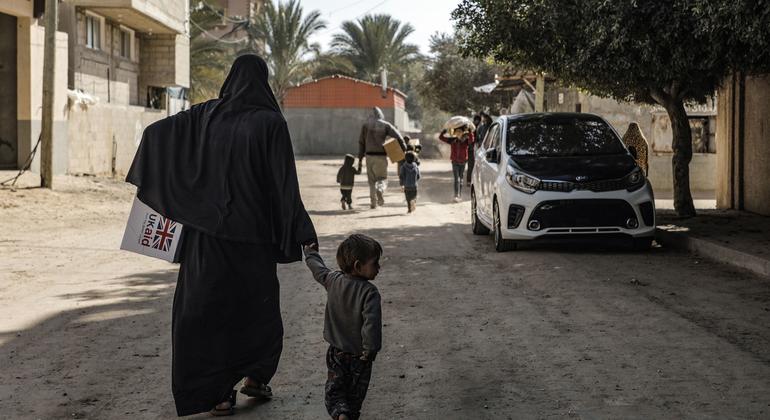Women adapt better than men according to the writer. (Getty)
In March, for International Women’s Month, I published an edition of this column titled, Are Women More Creative Than Men?.
Women I interviewed felt that the answer was “not more creative but differently”. They pointed out that societal expectations have limited women’s creativity and its recognition and, despite that, their emotional intelligence and empathy and their ability to shift perspective and collaborate give them a special creative power.
Some people — especially women — thought the question was stupid, that we shouldn’t generalise based on sex, especially around something as esoteric as creativity, which expresses itself in so many ways.
So, of course, being a man, I thought I’d double down, in South Africa’s Women’s Month, to turn a similar lens on the question of adaptability. At the same time, I have learned a bit of a lesson, which is why the title of this week’s column is phrased as it is.
Let’s start by getting definitions clear. Adaptability is distinct from creativity although they resemble each other. Adaptability is the first step in the process of ACI (adaptability, creativity, innovation).
In our Innotivity training, I define adaptability as the ability to be different from yourself, as opposed to creativity, which is about thinking differently from yourself, and innovation, which is acting differently from yourself. Be, think, act. Then get your results.
The process begins with adapting to the situation — changing ourselves to meet changing needs or doing so ahead of time when we’ve foreseen them. None of the rest happens until we adapt first.
This year, LinkedIn called adaptability the most important skill in work, replacing creativity and, at least partly, fulfilling Alvin Toffler’s prediction in his 1970 book Future Shock that the rapid rate of change would make adaptability more important than reading and writing in less than 20 years.
Better late than never. A century and a half before that, Charles Darwin told us that adaptability was more important to human survival than intelligence, strength, or anything, and we didn’t really listen to him either.
Cognitive, emotional and behavioural transformation is at the core of adaptability. The aim is to shift over here, with me, to create a different experience that leads to different results in the world outside of me.
Women are better at such shifts. They tend to use positive emotions to cope with stress, keeping them more mentally flexible, while men tend to hunker down and push through.
As gender roles have evolved, women have had to continually redefine their identities, juggling career aspirations with family commitments and to be seen as human beings instead of women in the first place. Work-life balance, cross-cultural navigation, psychological flexibility and resilience are all important elements of adaptability that women excel at.
“Women are chameleons,” says Noloyiso Tlali, a top executive I know. “We’re required to fill many different roles throughout a single day and we do it. Even in the face of external resistance and loud inner critics and imposter syndrome.”
Research backs this up, showing a direct correlation between women’s collaboration and empathy skills and their adaptive achievement.
Boston Consulting Group and The Leadership Quarterly both conducted studies showing that companies put more women in leadership roles during times of crisis. This implies that women are considered better at adaptive leadership — although it also puts them on a “glass cliff” where failure is more likely and criticism and blame easier.
For example, Mary Barra took over General Motors while the company was dealing with a massive recall that nearly bankrupted it. And Marissa Mayer became CEO of Yahoo! around the same time, managing to keep it alive while its relevance was disappearing.
Even in politics, women have often been tapped to lead at times of polarisation. Take Theresa May during Brexit, or Kamala Harris in the US now. Men, at such times, usually lead us into greater conflict as the way to get us out.
The most surprising data I came upon while researching this piece showed that women have been socialised, more than men, to adopt a growth mindset.
The creator of the concept of growth mindset, American psychologist Carol Dweck, led a study showing that parents are more likely to teach their daughters than their sons the importance of persistence — to repeatedly adapt and try again.
And a piece published in Psychology of Women offered ample evidence that parents teach their girl children more skills related to overcoming challenges, seeming to expect them to have to make a bigger effort than the boys to forge their paths.
Teachers also tend to teach girls to lean more on attitude than abilities and to adopt more adaptive learning strategies. Women excel in collaborative problem-solving at least partly because they are taught to compromise.
Niven Postma is a South African expert on organisational politics and leadership. She points out that she, like other girls, was taught to play it safe and get good marks, while the boys were taught to play rough and take risks. Postma shared two powerful quotes with me.
Reshma Saujani: “We raise our girls to be perfect and our boys to be brave.”
Sallie Krawcheck: “The biggest mistake I’ve seen women make at work is that they treat work like school. They think if they put their head down and work hard, someone will notice and give them an A.”
Adaptability permeates even female language, according to linguistics expert Deborah Tannen. We teach our boys to use their speaking to develop status and our girls to use theirs to develop rapport.
Boys try to outdo one another with jokes and stories, while girls avoid putting others down and ostracise those who act superior — until high school, of course, when about 20% of them become part-time “mean girls”, according to, yes, actual studies of the mean girls phenomenon.
This all speaks to the idea that, from an early age, we teach men to be assertive while we teach women to be flexible. And I don’t mean like Simone Biles … although that too. I spent years in yoga trying to do the splits. Women are better at it.
Which brings us to the biology. The US National Academy of Sciences and Journal of Neuroscience have both shown that women have a stronger corpus callosum — the tissue that connects the two brain hemispheres — than men do. This facilitates multitasking and multiple interpretations of self.
In other words, men have a physical reason to find it harder to shift who we are to meet the moment. This may be why men feel a greater need to be bold, certain and firm in our identity. In creative thinking, this lack of personal adaptability is a serious weakness.
If women are better at adapting, can we men catch up? Perhaps enlist women as our adaptability mentors, letting them teach us to embrace change and cultivate resilience so we don’t get left behind in the future of work? Perhaps look into the mirror and practice identity shifting? Maybe just get a brain transplant?
If we’re focused about it, we might manage to be as good at adapting as women are by November, which is International Men’s Month. But probably never.
Michael Brian Lee is an advisory board member of World Creativity and Innovation Week/Day and a Radio 702 creativity contributor.
















![Ep266: [Lean Series] How to Plan a Responsible Fat Loss Phase Ep266: [Lean Series] How to Plan a Responsible Fat Loss Phase](https://carrotsncake.com/wp-content/uploads/2024/06/Carrots-N-Cake-VIP-Nutrition-Coaching-768x1040.jpeg)
.jpg)

Discussion about this post